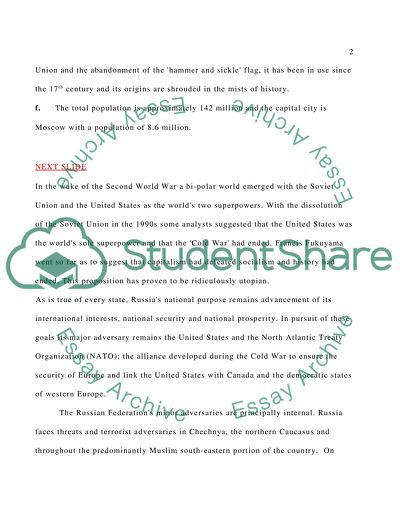Cite this document
(“Russia - National Security Presentation Speech or”, n.d.)
Retrieved from https://studentshare.org/geography/1406070-russia-national-security-presentation
Retrieved from https://studentshare.org/geography/1406070-russia-national-security-presentation
(Russia - National Security Presentation Speech or)
https://studentshare.org/geography/1406070-russia-national-security-presentation.
https://studentshare.org/geography/1406070-russia-national-security-presentation.
“Russia - National Security Presentation Speech or”, n.d. https://studentshare.org/geography/1406070-russia-national-security-presentation.


